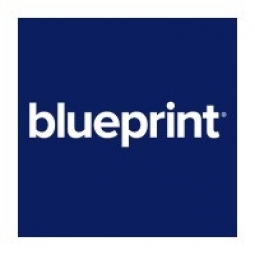公司规模
Large Corporate
地区
- America
国家
- United States
产品
- Blueprint’s Enterprise Automation Suite
- Blueprint’s Process Modeler
- BlueDocs Document Importer
- Intelligent Whiteboard Importer
- Business Process Modeler
- Impact Explorer
技术栈
- RPA
实施规模
- Enterprise-wide Deployment
影响指标
- Cost Savings
- Productivity Improvements
- Digital Expertise
技术
- 分析与建模 - 机器人过程自动化 (RPA)
适用行业
- 金融与保险
适用功能
- 商业运营
用例
- 预测性维护
- 过程控制与优化
- 监管合规监控
服务
- 数据科学服务
- 系统集成
关于客户
客户是一家财富 1000 强保险公司,为美国家庭提供广泛的保险产品和服务。这家上市金融机构致力于为客户提供优质安全的服务,并为员工提供令人满意的工作。该组织通过一系列品牌提供各种保险和退休解决方案。在过去 20 年里,该机构收购了 15 多家公司,并使用 350 多个平台来开展日常活动。总的来说,该机构依赖超过 15,000 个工作流程。
挑战
该保险公司在过去 20 年中收购了 15 多家公司,并使用 350 多个平台来执行日常活动。这产生了超过 15,000 个工作流程,这需要员工花费大量时间执行重复、手动且容易出错的任务。该组织意识到这种方法从长远来看是不可持续的,特别是如果他们想跟上市场不断变化的步伐。他们设定了一个为期两年的转型目标,最终将使他们摆脱对过时遗留系统的依赖,并提高客户和员工的安全性和满意度。
解决方案
该提供商通过确定关键利益相关者来开始转型,这些利益相关者将对其团队执行的日常活动有宝贵的见解。利用这些信息,该公司利用 Blueprint 的企业自动化套件来提取其 15,000 个工作流程中的最初 100 个。使用 Blueprint 的流程建模器,他们能够协作优化和协调这些流程,将它们连接到其他依赖项,并将它们打包到数字蓝图中。然后,这些数字蓝图被自动推送到他们的 RPA 平台,以加速和指导自动化的精确机器人开发。推动自动化成功的企业自动化套件的关键方面包括 BlueDocs 文档导入器、智能白板导入器、业务流程建模器和 Impact Explorer。
运营影响
数量效益

Case Study missing?
Start adding your own!
Register with your work email and create a new case study profile for your business.
相关案例.

Case Study
Real-time In-vehicle Monitoring
The telematic solution provides this vital premium-adjusting information. The solution also helps detect and deter vehicle or trailer theft – as soon as a theft occurs, monitoring personnel can alert the appropriate authorities, providing an exact location.“With more and more insurance companies and major fleet operators interested in monitoring driver behaviour on the grounds of road safety, efficient logistics and costs, the market for this type of device and associated e-business services is growing rapidly within Italy and the rest of Europe,” says Franco.“The insurance companies are especially interested in the pay-per-use and pay-as-you-drive applications while other organisations employ the technology for road user charging.”“One million vehicles in Italy currently carry such devices and forecasts indicate that the European market will increase tenfold by 2014.However, for our technology to work effectively, we needed a highly reliable wireless data network to carry the information between the vehicles and monitoring stations.”

Case Study
Safety First with Folksam
The competitiveness of the car insurance market is driving UBI growth as a means for insurance companies to differentiate their customer propositions as well as improving operational efficiency. An insurance model - usage-based insurance ("UBI") - offers possibilities for insurers to do more efficient market segmentation and accurate risk assessment and pricing. Insurers require an IoT solution for the purpose of data collection and performance analysis

Case Study
Smooth Transition to Energy Savings
The building was equipped with four end-of-life Trane water cooled chillers, located in the basement. Johnson Controls installed four York water cooled centrifugal chillers with unit mounted variable speed drives and a total installed cooling capacity of 6,8 MW. Each chiller has a capacity of 1,6 MW (variable to 1.9MW depending upon condenser water temperatures). Johnson Controls needed to design the equipment in such way that it would fit the dimensional constraints of the existing plant area and plant access route but also the specific performance requirements of the client. Morgan Stanley required the chiller plant to match the building load profile, turn down to match the low load requirement when needed and provide an improvement in the Energy Efficiency Ratio across the entire operating range. Other requirements were a reduction in the chiller noise level to improve the working environment in the plant room and a wide operating envelope coupled with intelligent controls to allow possible variation in both flow rate and temperature. The latter was needed to leverage increased capacity from a reduced number of machines during the different installation phases and allow future enhancement to a variable primary flow system.

Case Study
Automated Pallet Labeling Solution for SPR Packaging
SPR Packaging, an American supplier of packaging solutions, was in search of an automated pallet labeling solution that could meet their immediate and future needs. They aimed to equip their lines with automatic printer applicators, but also required a solution that could interface with their accounting software. The challenge was to find a system that could read a 2D code on pallets at the stretch wrapper, track the pallet, and flag any pallets with unread barcodes for inspection. The pallets could be single or double stacked, and the system needed to be able to differentiate between the two. SPR Packaging sought a system integrator with extensive experience in advanced printing and tracking solutions to provide a complete traceability system.

Case Study
Transforming insurance pricing while improving driver safety
The Internet of Things (IoT) is revolutionizing the car insurance industry on a scale not seen since the introduction of the car itself. For decades, premiums have been calculated using proxy-based risk assessment models and historical data. Today, a growing number of innovative companies such as Quebec-based Industrielle Alliance are moving to usage-based insurance (UBI) models, driven by the advancement of telematics technologies and smart tracking devices.
Case Study
Enhancing Security and Compliance in Remitly's Global Money Transfer Service with Fastly
Remitly, an online remittance service, was faced with the challenge of securing its proprietary global transfer network. The company needed a security solution that could meet PCI requirements and protect customers' sensitive transactions through its mobile application. The solution had to be capable of defending against new and emerging attack types without impacting performance. Remitly also had to deal with irregular traffic patterns, such as a sudden spike in account transfers from a small network segment on the Pacific coastline of South America. The company needed to determine in real time whether such traffic indicated an attack or valid requests. A traditional web application firewall (WAF) would not be able to distinguish this traffic, potentially leading to customer frustration if the IP was blacklisted.







